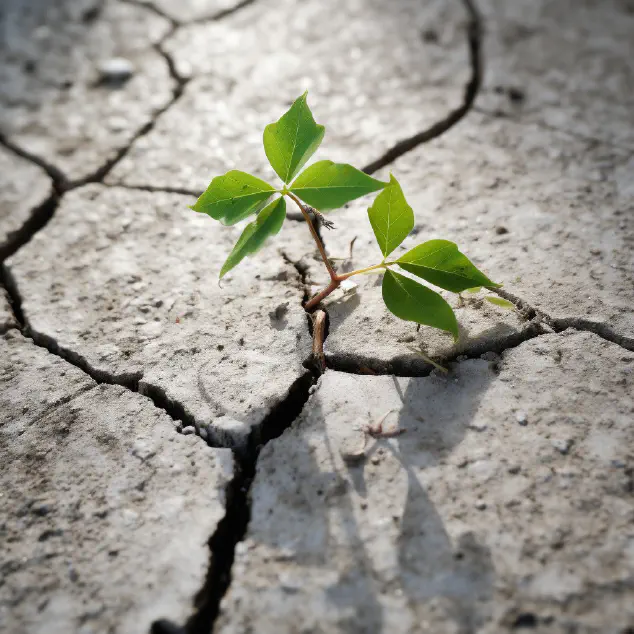
Description
The Growth Mindset Blueprint is designed to help individuals achieve success through the power of a growth mindset. This blueprint is a step-by-step guide that will lead you on a path of growth, learning, and development, allowing you to conquer challenges, overcome obstacles, and reach your full potential.
A growth mindset is the belief that your abilities and traits can be developed through hard work, dedication, and persistence. Adopting a growth mindset can help you overcome self-doubt, fears, and limitations, allowing you to push past your comfort zone, take risks, and grow in ways you never thought possible.
The Growth Mindset Blueprint is not a one-size-fits-all solution. Instead, it provides practical tools, techniques, and strategies that can be adapted to your unique needs and goals. By following this blueprint, you’ll learn how to approach challenges with a positive and growth-oriented mindset, embrace failures as opportunities for learning and growth, and develop a lasting self-belief that will drive you towards success.
Whether you’re a student, a professional, an entrepreneur, or anyone who wants to grow and achieve, The Growth Mindset Blueprint is your ultimate guide to unleashing your potential and creating a life of growth, success, and fulfillment.
Introduction
A growth mindset is the belief that an individual’s abilities and intelligence can be continually improved through effort and perseverance. This mindset is characterized by a willingness to embrace challenges, learn from failure, and put in the hard work necessary for personal development and success.
Having a growth mindset is important because it helps individuals to overcome obstacles, set meaningful goals, and reach their full potential. With a growth mindset, individuals are more likely to view challenges as opportunities for growth rather than insurmountable obstacles, and they are more willing to take risks and learn from their mistakes. Moreover, individuals with a growth mindset tend to be more resilient and better equipped to handle setbacks and failures.
By adopting a growth mindset, individuals can transform their thinking and approach to life. Instead of viewing their abilities as fixed and limited, they can cultivate a mindset of growth, learning, and development. With this mindset, they can tackle challenges with confidence, learn from their failures, and achieve success in all areas of life. So, let’s dive into the Growth Mindset Blueprint and start our journey towards a growth mindset!
Step 1: Believe in Yourself
Believing in yourself is an essential component of the Growth Mindset Blueprint. When you believe in yourself, you are confident in your abilities and you trust yourself to make the right decisions. This self-belief provides the foundation for success.
Importance of Believing in Yourself
Believing in yourself helps build resilience, which is important for achieving success. Researchers have found that people who believe in themselves are better able to cope with challenges and recover from setbacks. This resilience helps them to continue to work towards their goals despite obstacles or failures.
Examples of How Self-Belief can Lead to Success
People who believe in themselves are more likely to take risks and try new things. They are also more likely to persist in the face of obstacles and setbacks. This persistence can lead to achievement in many areas such as personal relationships, career, and education.
Tips and Techniques for Cultivating Self-Belief
If you struggle with self-belief, there are several things you can do to cultivate it:
- Practice positive self-talk. Instead of focusing on your weaknesses, remind yourself of your strengths and accomplishments.
- Surround yourself with positive and supportive people who encourage you to believe in yourself.
- Set achievable goals and celebrate your successes along the way.
- Don’t let failures or setbacks define you. Use them as an opportunity to learn and grow.
By cultivating self-belief, you can overcome self-doubt and achieve your goals.
Step 2: Embrace Challenges
Challenges are an integral part of life and they come in various shapes and sizes. Whether personal or professional, we encounter them on a daily basis. However, the way we perceive and approach these challenges can greatly impact our growth and development. Embracing challenges is an important step towards achieving success through a growth mindset.
Why challenges are important for growth and development
Challenges offer a unique opportunity to learn, grow, and develop. When we are faced with a challenge, we are forced to step out of our comfort zone and think creatively. By doing so, we push ourselves to develop new skills and talents that we might not have otherwise discovered. Embracing challenges also helps us to build resilience and grit, which can be valuable in all areas of life.
Examples of how challenges can lead to success
Many successful people attribute their achievements to the challenges they faced. Oprah Winfrey, for example, had a tumultuous childhood and faced challenges early on in her career as a television reporter. But she persevered and eventually became one of the most influential women in media. Similarly, J.K. Rowling faced rejections from several publishers before Harry Potter became a worldwide phenomenon.
Tips and techniques for embracing challenges
-
Change your mindset: Rather than viewing challenges as obstacles or threats, view them as opportunities for growth and development.
-
Break it down: Sometimes, challenges can feel overwhelming. Breaking them down into smaller, more manageable tasks can help you to feel more in control.
-
Seek support: Don’t be afraid to ask for help and support along the way. Surrounding yourself with people who believe in you and your abilities can give you the confidence and motivation you need.
-
Stay positive: A positive attitude can go a long way in helping you to overcome challenges. Focus on the progress you have made, rather than the obstacles in your way.
In conclusion, embracing challenges is an important part of achieving success through a growth mindset. By changing your mindset, breaking down challenges, seeking support, and staying positive, you can overcome any obstacle that comes your way. Remember, challenges are opportunities in disguise.
Step 3: Learn from Failure
Failure is often viewed as a negative thing, but in reality, it is a valuable part of the learning process. When we fail, we gain valuable experience and insights that can help us succeed in the future. However, simply failing is not enough to ensure growth. It is important to take the time to reflect on and learn from our failures. Here’s how you can do it:
Acknowledge and Accept Failure
The first step in learning from failure is acknowledging and accepting it. This can be difficult, as failure can be a blow to our self-esteem and confidence. However, it is important to remember that failure is a natural part of the learning process and that everyone experiences it at some point.
Analyze What Went Wrong
Once you have acknowledged and accepted your failure, the next step is to analyze what went wrong. This involves taking an honest look at your actions, decisions, and thought processes leading up to the failure. Ask yourself questions like:
- What were my goals and expectations?
- What actions did I take to reach my goals?
- Were there any external factors contributing to the failure?
- Were there any internal factors contributing to the failure (e.g. fear, lack of confidence, etc.)?
Learn from Mistakes
After analyzing what went wrong, it’s important to take what you’ve learned and apply it to future situations. This involves making specific changes to your actions or mindset to prevent similar failures from happening again. Some tips for learning from failure include:
- Identifying specific behaviors or mindsets that contributed to the failure
- Creating strategies or action plans to prevent similar failures in the future
- Seeking feedback from others to gain new perspectives and insights
- Practicing these changes consistently to reinforce new habits and ways of thinking
Reframe Your Perspective
Finally, it’s important to reframe your perspective on failure. Rather than seeing it as a negative experience, try to view failure as an opportunity for growth and learning. Remember that every successful person has experienced failure at some point in their lives. By embracing failure and using it as a learning opportunity, you can cultivate a growth mindset and achieve even greater success in the future.
As Thomas Edison once said: “I have not failed. I’ve just found 10,000 ways that won’t work.” With the right mindset and approach, failure can be an important stepping stone to success.
Step 4: Have a Growth Mindset
Growth Mindset vs. Fixed Mindset
Individuals with a growth mindset view their abilities as being malleable, and they believe they can develop new skills and abilities with effort and dedication. In contrast, individuals with a fixed mindset believe that their abilities are predetermined and cannot be changed.
Those who have a growth mindset understand that challenges and failures are opportunities to learn and grow, while those with a fixed mindset view challenges as threats and failures as signs of inadequacy.
The Importance of a Growth Mindset
Having a growth mindset is an essential component of achieving success and personal growth. This approach allows individuals to overcome obstacles and challenges while embracing the learning process.
Research has shown that people with a growth mindset tend to perform better academically and professionally, have more satisfying relationships, and maintain better mental health.
Cultivating a Growth Mindset
Cultivating a growth mindset involves several key practices, including:
-
Embrace the Learning Process: Adopting a growth mindset means understanding that learning often involves making mistakes and failing. Reframe mistakes and failures as opportunities to learn and grow, rather than as signs of incompetence.
-
Focus on Effort Rather Than Results: A growth mindset prioritizes effort, hard work, and dedication over achievement. Emphasize the importance of the process itself rather than only focusing on the outcome.
-
Seek Out Feedback: Feedback is an essential component of growth and development. Seek out constructive feedback from others and use it as an opportunity to improve.
-
Embrace Challenges: Challenging yourself can be uncomfortable, but it is an essential component of growth. Take on tasks that force you to stretch your abilities and build new skills.
-
Believe in Your Ability to Learn: Reframe your beliefs about intelligence and ability. Emphasize the belief that intelligence and skills can grow and develop over time with dedication and hard work.
By cultivating a growth mindset, individuals can achieve success, build resilience, and embrace change with enthusiasm. So take a leap of faith and start focusing on the learning process itself. Embrace obstacles and challenges as opportunities rather than threats, and believe that you have the capacity to learn and grow as much as your heart desires.
Conclusion
In conclusion, a growth mindset is essential for anyone who wants to achieve success in life. Through the Growth Mindset Blueprint, we have discussed how believing in ourselves, embracing challenges, learning from failure, and cultivating a growth mindset can lead to personal and professional growth.
We hope that this blueprint has provided you with valuable insights and practical techniques that you can use to cultivate a growth mindset and achieve your goals. Remember, it’s never too late to adopt a growth mindset – whether you’re a student, a professional, or someone who wants to improve their life, the principles of a growth mindset can help you achieve success.
We encourage you to take the first step by believing in yourself and embracing challenges. Remember that every failure is an opportunity to learn and grow, and that having a growth mindset can help you overcome even the most challenging obstacles.
In the words of Carol S. Dweck, “Becoming is better than being.” So embrace the process of becoming the best version of yourself, and enjoy the challenges and opportunities that life has to offer.



